Installing WordPress on VestaCP with SSL (Let's Encrypt)
Installing WordPress on one of our clouds with VestaCP is very easy. Just follow this manual and in a few steps you will have it installed.
In order to perform the installation we will need a cloud and a domain that will be used to manage our Wordpress.
Access your VestaCP control panel using your favorite browser. In the browser bar enter the IP of your cloud (it was sent to your email address when you signed up for the cloud) and port 8030. For example: https://nuestra_ip:8083/
- In the case of Google Chrome to access VestaCP we will have to click on "ADVANCED CONFIGURATION " and then on the link below: Access "our_ip" (non-secure site).
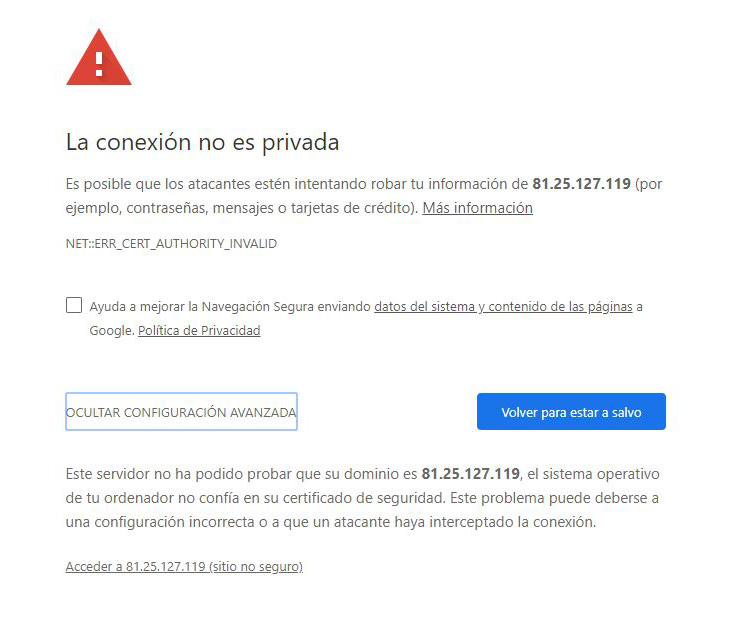
-
Once inside our VestaCP we will modify the Admin user:
User > Admin > Edit.
We will change the Email account for an account that we have active (we will take the opportunity to change the language).
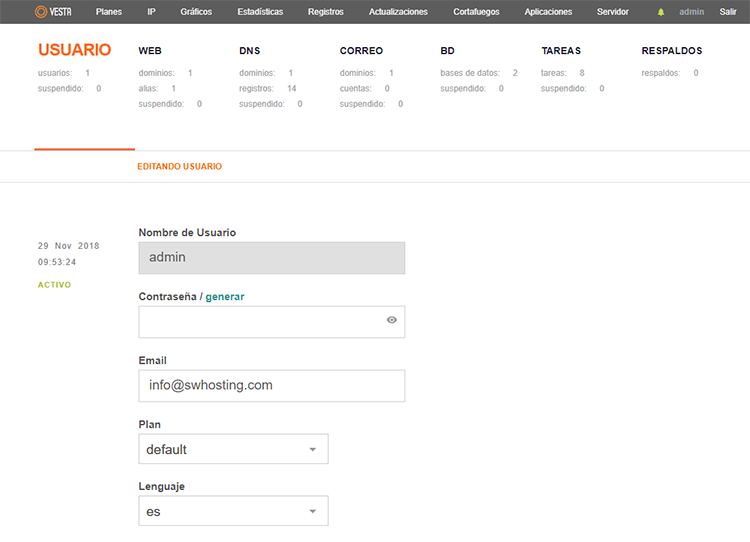
- We will add our domain in Web > Add Web Domain:.
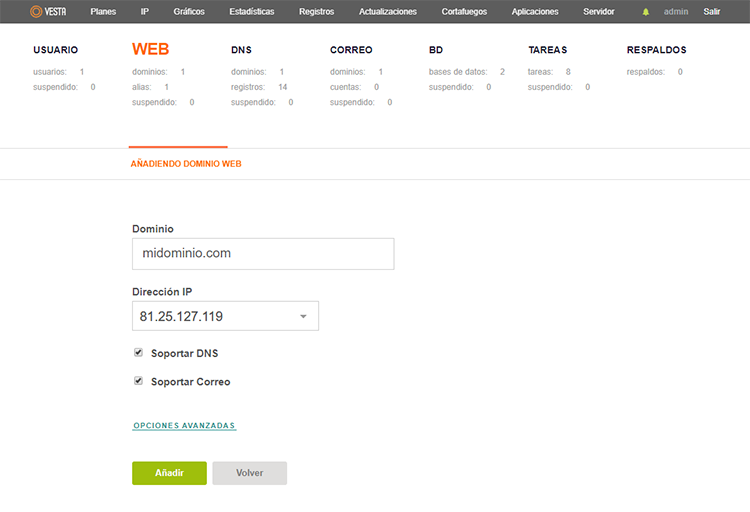
- We will edit and configure our FTP account: Web > Domain:.
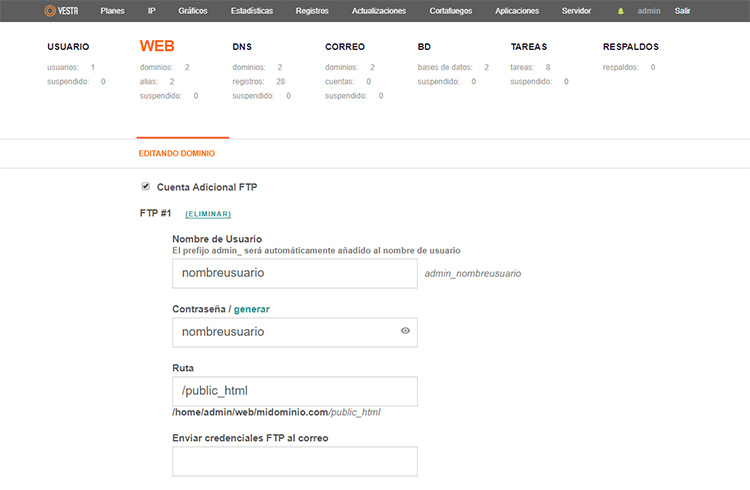
- We will create the database and the user: BD > Add database.
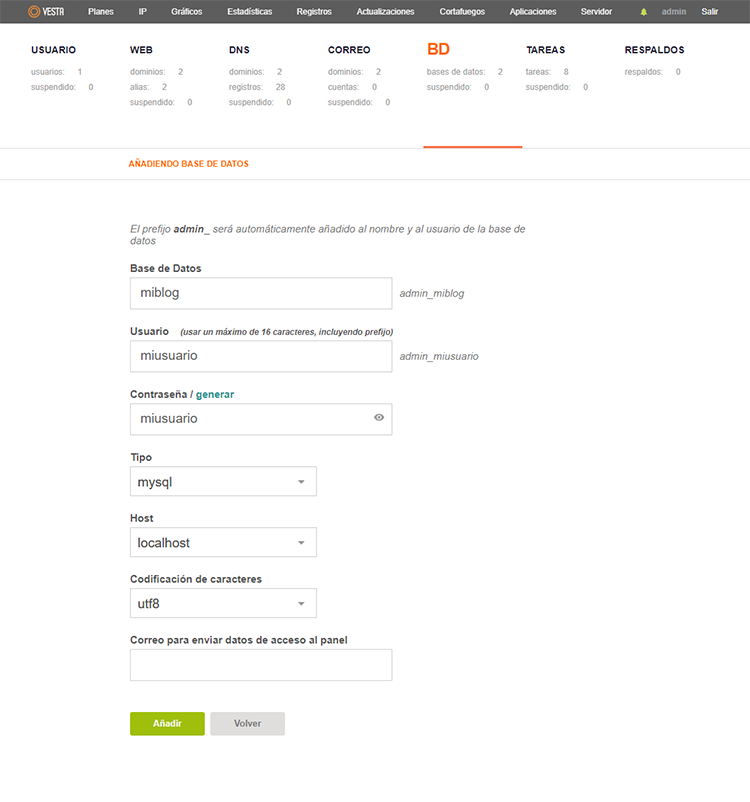
- Copy the WP files to the server with Filezilla (or other FTP program):
-
Server: The IP of the server (our_ip)
-
User: The one you created before, remember to put the prefix "admin_" before the name, in our case admin_username.
-
Password: The one you configured.
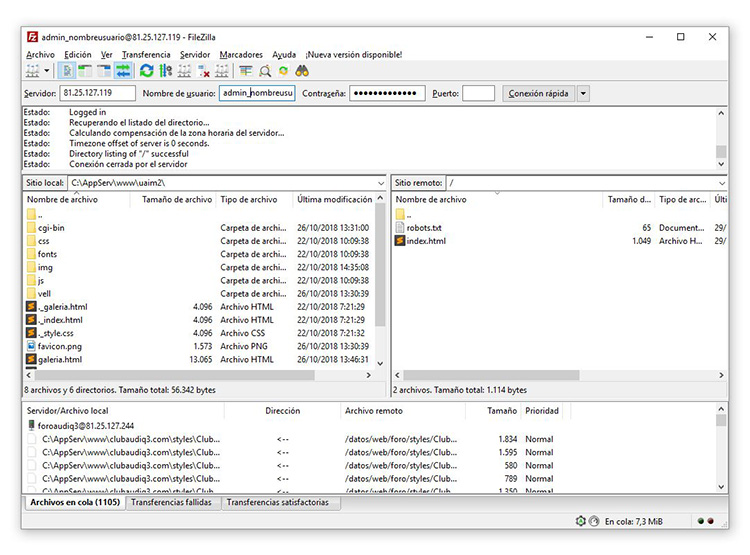
- We will access the folder (/home/admin/web/domain/public_html) of our server and copy all the files there (first we will delete the index.html file).
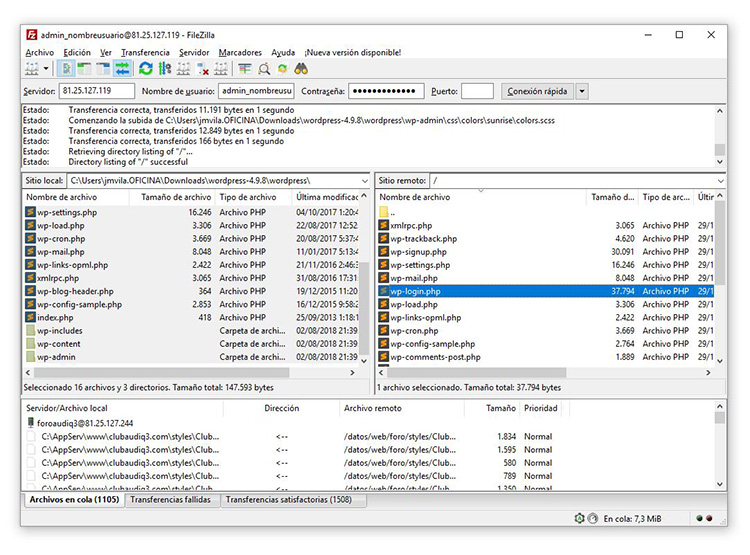
-
Install WordPress.
We will install WordPress following the steps of the installer. When configuring the database we will use the database name and the user previously created in the SWPanel:
-
Database name: the name we have previously configured, in our case admin_miblog.
-
User name: the one previously configured, in our case admin_user.
-
Password: the one chosen during the database creation.
-
Data server: localhost
-
Table prefix: We can change the prefix if we want. Although it is optional, if we change it, we will have our database a little more secure.
We execute the installation. In the following step it will ask for the name of the site and the access data of the administrator user.
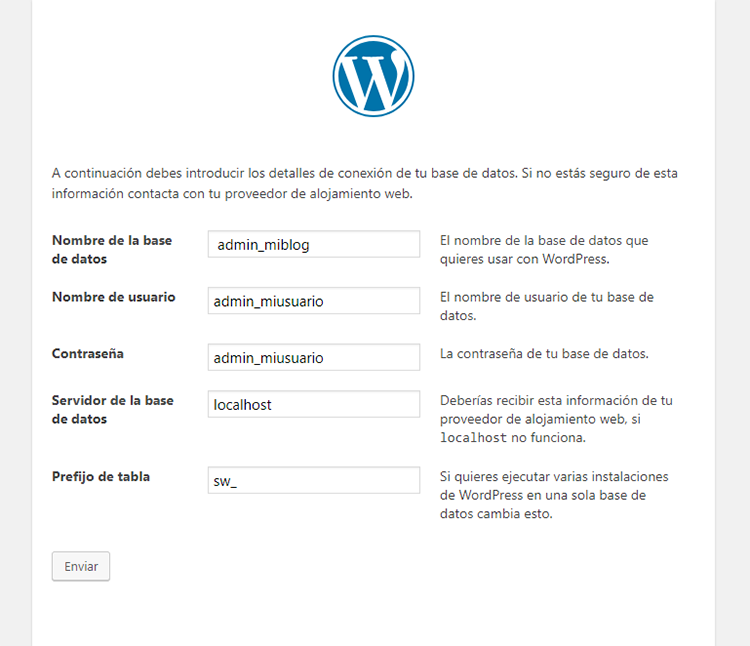
Once these steps are done, we will have the WordPress installed.
To access the WordPress administration we will go to http://midominio.com/wp-admin using the username and password that we configured at the time of installation.
-
Activate SSL in WordPress.
To activate Let's Encrypt we will have to go to:
Web > Edit and activate the options Support SSL and Support Lets Encrypt.
Once the changes are saved, in 5 minutes we will have the certificate activated.
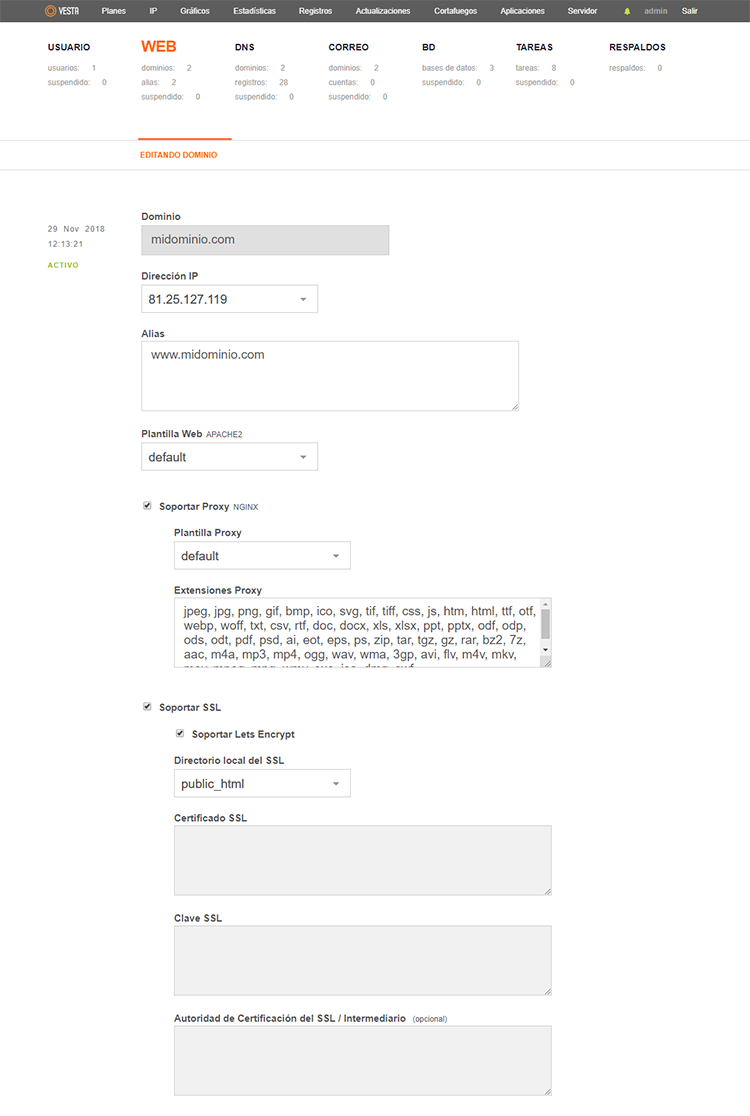
-
To finish we will have to access our WordPress administration panel:
Settings > General.
We modify the address replacing HTTP by HTTPS.

Once the changes are saved we will have our WordPress installed on a VestaCP with SSL certificate (Let's Encrypt).









